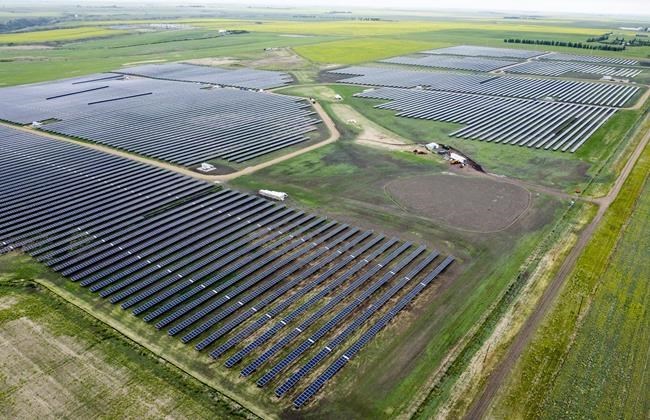EDMONTON — Critics are asking why the Alberta government's proposed regulations on renewable power seem to have ignored the conclusions of its own utilities regulator.
"How did they end up creating the renewable regulations they introduced?" asked New Democrat environment critic Sarah Elmeligi. "The regulations do not match the content of the report."
Paul McLauchlin of Rural Municipalities Alberta agreed.
"They swung too far away from the recommendations of the (report). I'm worried about market distortion," McLauchlin said.
On Wednesday, the Alberta Utilities Commission publicly released a report the provincial government had asked it to prepare as part of an inquiry into the impacts of Alberta's booming renewable power industry.
The government has had the report since Jan. 31.
On Feb. 28, the day before it ended a six-month moratorium on new approvals for renewables, it introduced a set of proposed new rules for the industry.
The proposals rule out wind and solar on Alberta's best farmland, impose a 35-kilometre buffer zone around protected areas and so-called "pristine viewscapes," and would require developers to post some kind of financial security for reclamation.
In contrast, the commission's report concludes wind and solar power poses little threat to Alberta's agriculture or environment and that concerns over reclamation and "pristine viewscapes" can be largely addressed with modifications to existing rules.
Renewables are rarely sited on top-quality farmland, it says. Even if they were, says the report, they would use up less than one per cent of that land by 2041.
Reclamation of renewable sites is easier and cheaper than for other industries, the report says. And it concluded there's no consistent way to write regulations protecting a vista that may stir one person but leave another cold.
The Canadian Press on Wednesday was promised an interview with Affordability and Utilities Minister Nathan Neudorf, but it was cancelled by the minister's office Thursday.
In the legislature, Alberta Premier Danielle Smith defended her government's policies.
"If you put acres and acres of solar panels on fields that could be used for irrigation ... you cannot grow agriculture," she said.
"If you put up wind turbines the size of the Calgary Tower or within a couple of kilometres of our beautiful UNESCO Heritage sites ... it really does interfere with our viewscape."
She said the United Kingdom, the U.S. and Australia all have some kind of "parameters" around the siting of renewable projects.
Still, the proposed regulations go beyond what the commission calls for, said Jorden Dye of the Business Renewables Centre, which links renewable power generators with prospective consumers.
"The existing regulatory framework is sufficient," he said. "The government is going against the recommendations of its own commission and singling out the renewables industry."
Elmeligi said the idea of protecting scenic landscapes was considered for the South Saskatchewan Regional Plan but rejected as unworkable.
"It can't be measured, it can't be quantified. How can you hold that as a criteria for development?" Elmeligi said.
"Having a really subjective, wishy-washy criteria like viewscape instantly removes (business) certainty."
McLauchlin said some elements of the commission's report appear to have found their way into government policy. They include an increased voice for municipalities in land use decisions and a recognition that some parts of the province will be more affected by renewable development than others.
He said he would also like to see more transparency in the cleanup provisions of agreements between developers and landowners.
"I don't disagree with the Alberta Utilities Commission, but some level of oversight is needed."
But he fears the government proposals are restrictive and arbitrary.
"Case by case is the best solution," he said.
This report by The Canadian Press was first published March 14, 2024.
Bob Weber, The Canadian Press



